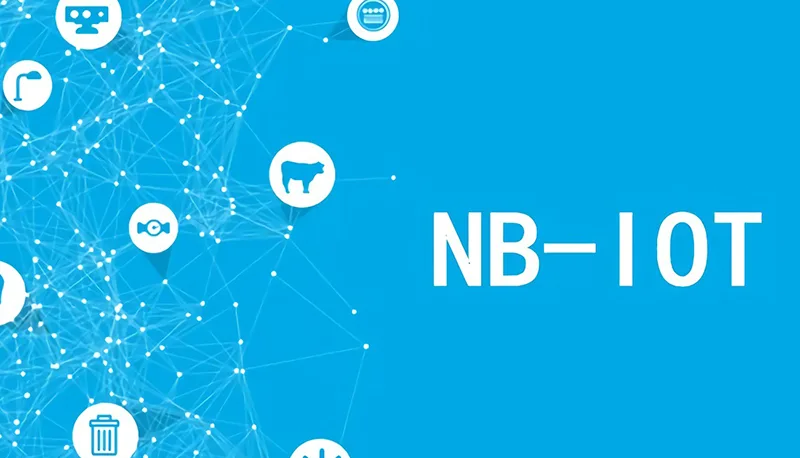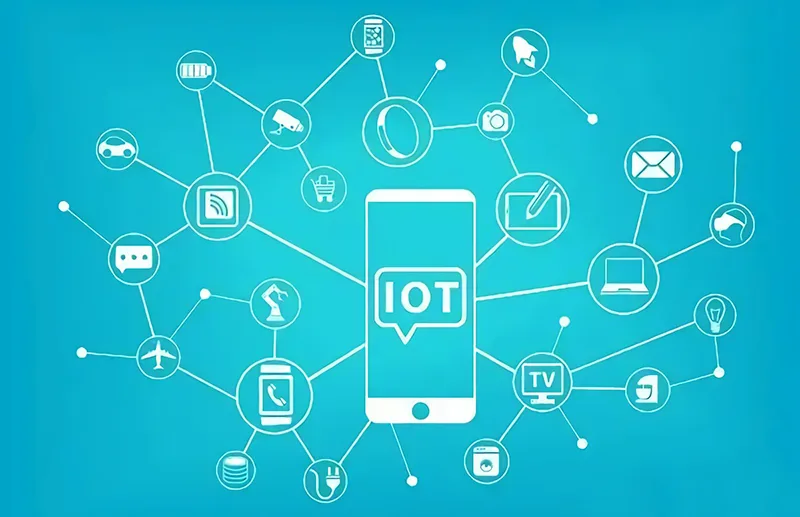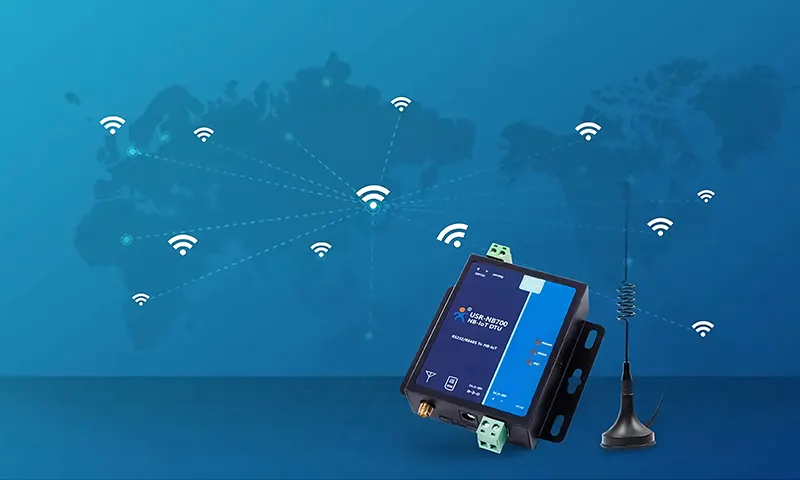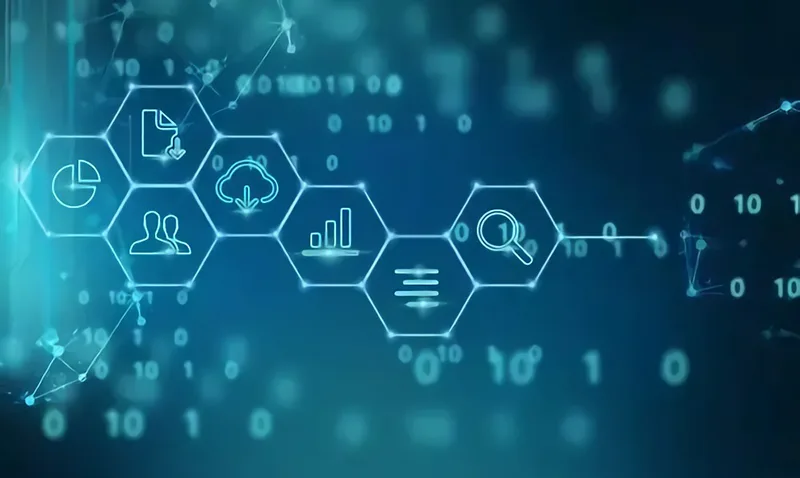To save implementation costs and facilitate upgrades, NB-IoT applications based on cellular networks, can be implemented directly on GSM, UMTS, or LTE networks and uses only roughly 180KHz bandwidth. The Internet of Everything relies heavily on the cellular-based Narrow Band Internet of Things (NB-IoT).
1. What is NB-IoT technology

NB-IoT, also known as low-power Wide area networks, is a new technology in the IoT space that allows low-power devices to connect to cellular data across wide area networks (LPWAN). In addition to offering extensive interior cellular data connection coverage, NB-IoT devices are predicted to have battery life improvements of at least 10 years. Devices requiring a high network connection speed and lengthy standby times may be connected effectively using NB-IoT.
Smart lock, smart city, smart water meter, smart gas meter, smart tracker, smart storage, and smart street light are some of the current application scenarios for NB-IoT. They all ask for the platform to receive the original data. The cloud platform enables data integration via the NB module and delivers the data to people for efficient data analysis and utilization.
2. How Does NB-IoT Work?

The ability of NB-IoT to function in noisy environments and at low signal levels is crucial, as is its ability to save battery life. Additionally, the NB-IoT is designed to send brief messages and does not need the transmission of audio-visual material, huge files, or other types of content.
In this approach, several physical characteristics aid in providing the essential characteristics:
- The maximum width of the NB-entire IoT‘s frequency band is one RB, 180 kHz;
- The user’s equipment’s radio path has a single transmitter, receiver, and antenna;
- Send and receive occur at different times, making this essentially a half-duplex transmission;
- The capacity to transmit on a subcarrier in the UL direction;
- Only BPSK and QPSK are utilized as modulation types;
- Continual improvement of the broadcast signal (coverage enhancement).
You may streamline the device and use it with the help of a half-duplex transmission mode, an antenna, and a narrowband in an RB. Other things include;
- Reduce the power used by the CPU;
- Reduce your energy use;
- Shrink in size;
- Cheaper machinery;
- Distribution of radio frequencies:
Provide NB-IoT with frequency resources. Nearly all of the same bands as 2G, 3G, and 4G in the “low” bar are usable for NB-IoT. B3 (900MHz), B8 (800MHz), and B20 (800MHz) (1800MHz). Using “higher” frequencies is pointless due to the substantial signal attenuation.
3. What is NB-IoT used for and NB-IoT Applications

Smart city
Long battery life and the lowest price are the goals of NB-IoT. It is appropriate for non-mobile, low data volume, delay-insensitive, cost-sensitive, and very large terminal orders of magnitude applications. An intelligent meter, intelligent street light, and intelligent wisdom city applications like maintenance hole covers are characterized by the number, wide distribution, weak mobility, and location precision that is not sensitive to location timeliness that is also daily. Hence, the rate and time delay is more tolerant because the terminal number is very high. It is typically challenging to conduct routine terminal maintenance, and It is necessary to maintain the placement and operational state of terminals, making NB-IoT positioning a great fit.
Smart agriculture
Consider the practice of animal husbandry. The herders’ cattle, sheep, and horses are often maintained in tens of kilometers-long pastures. Some animals must be kept for longer than two years, and ranchers must be aware of their livestock’s whereabouts at all times. Traditional GPS positioning has a weak terminal endurance, which makes it challenging to attain two years of service life and is constrained by the environment when satellite visibility is low. The terminal persistence of cattle within five years of stocking or the effect of climatic visibility on livestock location are not issues with NB-IoT positioning.
Smart wearable
Among wearable gadgets, the NB-IoT is appropriate for long-term chronic illness monitoring, controlling, and tracking the elderly, kids, and pets, and other devices that do not depend on smartphones. Real-time location tracking via NB-IoT is possible for both youngsters and the elderly. It may also be applied to their collars to keep pets from wandering off. The cars will include anti-theft features for locating and tracking operation data interaction and remote control capabilities with the platform and users. This is also relevant to smart bikes based on NB-IoT technology.
Park wisely
A troubling issue in many large cities is accessing parking. On the one hand, the rise in motor vehicle traffic results from cars looking for parking spaces, which clogs up the roads. However, some parking spaces are vacant and unoccupied since nobody wants to utilize them. This issue can be successfully solved by NB-IoT positioning, which can also assist drivers in finding parking spaces fast and giving them precise navigation directions. To realize the impact of smart parking, a significant quantity of real-time sensor data will be linked to the parking management platform and driving users simultaneously.
Use of NB-IoT in animal husbandry
There are two significant types of animal husbandry: captive and free range, with China’s northern and western borders serving as the primary grazing grounds.
The excellent quality of the meat from livestock and the lower feed costs are the benefits of stocking, but managing the livestock suffers as a result.
- The most straightforward way is artificial grazing. However, it has significant drawbacks:
- Special-person stocking is needed for artificial hose, which uses up labor.
- Captive stocking is a safety concern and exposes people to wild animal assault.
- Systematic management is not effective with captive stocking.
This issue may be resolved by using a GPS+GPRS animal husbandry positioning system. But since calves and sheep are so big, GPRS communication base station capacity will be inadequate, and battery life will also be an issue. In addition, the farms are further away, which makes the signal quality unpredictable.
- NB-IoT Application in remote meter reading
Every home uses a water meter, which is strongly tied to our daily lives.
Manual door-to-door meter reading statistics is the most straightforward way. Manual meter reading has several drawbacks as civilization has advanced:
- Ineffectiveness
- High cost of labor
- Errors are common in recorded data.
- Owners are cautious about visitors and won’t let them in
- Difficult management and upkeep
Thus, GPRS remote meter reading was created. It addresses several issues with the manual meter reading. It is safer, more efficient, and more modern than manual meter reading technology.
4. NB-IoT solutions

Low price
One feature of NB-IoT is that it can be quickly and cheaply installed inside an operator’s current network. For NB-IoT, there are three deployment methods. First, independent deployment enables NB-IoT to operate independently from the existing LTE network. Since the 200KHz channel bandwidth of GSM is more than adequate to meet the 180KHz bandwidth of NB-IoT, this technology is suited for the re-cultivation of the GSM spectrum.
Shallow power use
A common paging technique on mobile phones is DRX. NB-IoT has created two distinct modes, eDRX and PSM, to meet the demands of various circumstances. Readers must comprehend the DRX schema before the eDRX schema can be explained. If you stop considering it, even under ideal conditions, how can the phone be sure to hear the pager? In the same way that a focused student in class waits for the instructor to call on him to answer a question, this is the equivalent of keeping your phone ready to be paged every second of the day.
However, waiting for a page every second of every day on a mobile phone consumes a lot of battery life. As a result, programmers created the Discontinuous Reception technique DRX. The mobile phone will go into the IDLE state after each paging, and then it will switch off the receiver, precisely as students do when they take sleep in class. The DRX cycle in DRX mode is the interval between calls. The lengths of the DRX cycles are 1.28s, 2.56s, 5.12s, and 10.24s.
Super cover
The NB-IoT is intended to deliver a 20dB coverage boost over GPRS in terms of coverage. NB-IoT can achieve three times the range of GPRS and penetrate two more barriers than GPRS if the data is delivered differently. What NB-IoT fundamentals enable exceptional coverage? When it is necessary to differentiate the up and down. From a downlink perspective, it primarily improves transmission consistency via repeated broadcast to gain more significantly.
Incredible connection
Supersize connection is the last feature, but how does it function? Readers may wonder what distinguishes the traffic model of an Internet of Things terminal from a mobile phone. The Internet of Things has a large number of airports, but since each terminal only sends tiny packets, they are not affected by the delay requirement. Every device must have high-quality communication in order to contact the 4G base station, which must guarantee the communication quality of all users within the base station territory. This is why mobile phones can only have a certain number of users inside a base station area. However, since a significant proportion of devices remain inactive, the communication quality requirements for IoT devices are not as strict, allowing them to reach more terminals within the same base station range and support up to 50,000 IoT devices.
5. NB-IoT development trend

The telecom industry’s concept of the Internet of Things market is responsible for the emergence of NB-IoT, which was not an accident. Most internet-connected devices (IoT) have used Wi-Fi, Bluetooth, and other accessible technologies to connect over the past ten years because traditional 2G, 3G, and 4G networks cannot support IoT devices’ low power dissipation and low-cost requirements. This makes it challenging for telecom operators to turn a profit. The economy drives technology.
Despite being cellular technologies, NB-IoT and 2/3/4/5G have improved communication protocols that make them more suited for specific IoT applications. Power consumption may be a key indicator for Internet of Things (IoT) devices, and NB-IoT has made great progress in this area compared to previous cellular technologies.
For instance, applications for the Internet of Things may connect to the network as necessary since they do not have to be online all the time. They need to sleep when they are not regularly connected, which may significantly cut their power use. A wake-up mechanism must activate when a machine is sleeping, requiring the transmitter or receiver to listen for the other side’s signal. How this listening is designed and how it is implemented is crucial to power usage.
Power consumption is also a factor in connection-oriented transmission protocols like TCP. A three-way handshake is required to assure the connection’s reliability, which lengthens the connection time and, unsurprisingly, increases power consumption. However, a single link uses less power because UDP does not need this.
The wireless coverage distance in wireless communication is significantly influenced by transmit power and receive sensitivity. To reduce power consumption, it is also essential to lower the transmit power of the transmitter and increase the receive sensitivity of the receiver as much as possible over the same coverage distance. This may be accomplished by modifying the spread spectrum, the modulation mode, and other elements.
Since the natural world environment is highly complicated, radio waves must be able to overcome certain obstacles. The capacity to overcome the barriers is improved by increasing the wavelength and decreasing the frequency. In actuality, the power consumption of low-frequency radio waves might be reduced under the same distance coverage the more extended the coverage distance is under the same transmit power.
















